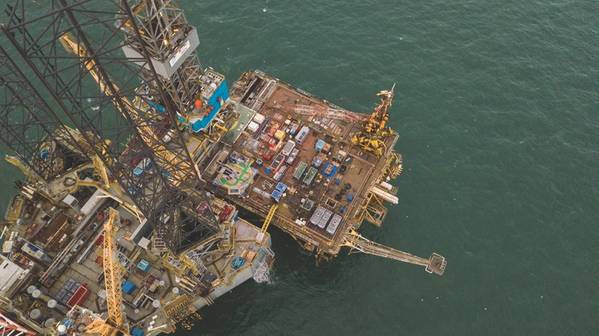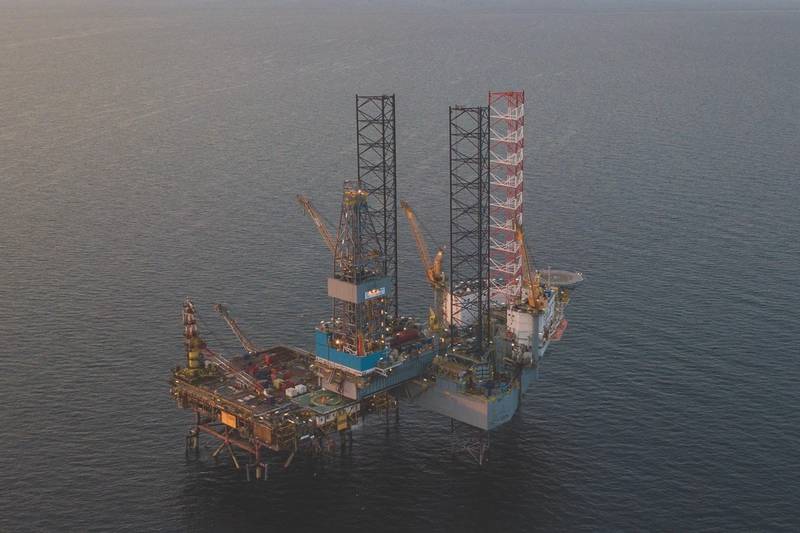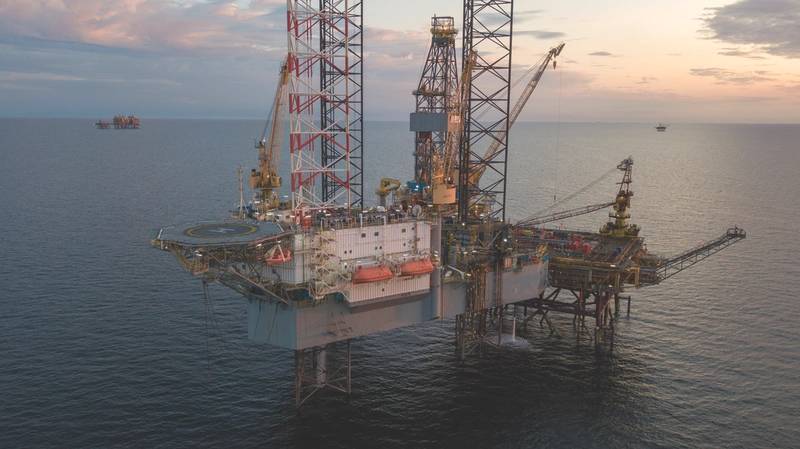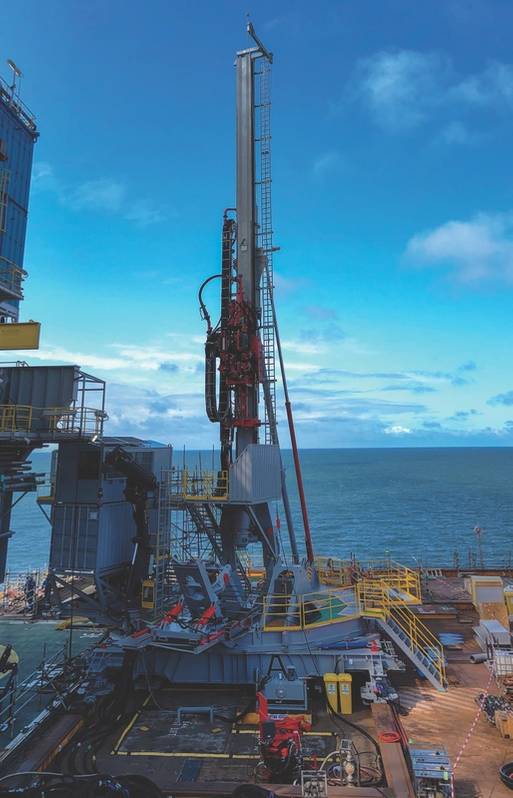
Shallow gas reservoirs drilled into at a 60-degree angle from the surface in the 1980s have posed a unique decommissioning challenge – resulting in a new design modular plug and abandonment (P&A) unit.
When it comes to decommissioning, many operators face the challenge of how to decommission their wells. Many platforms either never had a derrick or it’s not been maintained, so expensive rig reinstatement programs are needed, a jack-up rig brought in or a modular package installed on the facility.
For the DP3 and DP4 facilities in Spirit Energy’s Morecambe Bay complex, in the East Irish Sea, offshore west England, none of these options were available; there was no rig either onboard or available from elsewhere that could access the platforms wells – because they are slant wells, drilled at a 60-degree angle from the platform. They had been drilled from two rigs designed and built just for this field – the Morecambe Bay Driller and Flame – whose unique drilling packages no longer exist.
 (Photo: MW Visuals Ltd.)
(Photo: MW Visuals Ltd.)
These slant wells were drilled in the 1980s by previous owner British Gas when directional drilling technology wasn’t as advanced as it is today. Drilling at this 60-degree angle from the platform meant a significantly greater outreach was possible compared with conventional drilling at the time. “By opting for slant drilling, the Stage I development required only three drilling platforms as opposed to the seven required if vertical drilling rigs were to be used,” says SPE paper SPE-16151-MS, presented at the SPE/IADC Drilling Conference, in New Orleans, in 1987. While it worked for Morecambe Bay, it’s not a commonly used technique; no other offshore field in the UK used it and it’s little known of elsewhere (your author found a reference to use of a “Tilt rig” offshore Peru in the 1960s (SPE-2312-MS), except perhaps west Africa.
Although these types of well are uncommon, Spirit Energy has a large number of them in Morecambe Bay. There are 50 wells in total in the field, split across six of its eight platforms, with four subsea wells. Of the platform wells, 28 are slant wells with five on DP3 and four on DP4 facilities, which are the first platforms in the field to reach the end of their productive lives (while others are being refurbished).
Faced with this challenge, Spirit Energy went to the market for solutions. The preferred vendor Herrenknecht, a German tunnel boring technology firm leveraged their existing onshore slant well drilling packages. “Instead of redesigning offshore drilling technology, you can tilt the hydraulic mast between vertical and slant wells,” says Donald Martin, Project Manager at Spirit Energy. The technology required significant modifications for offshore, including the ability to skid around the drill deck and rotate the mast to align at the correct angle for each well.
 (Photo: MW Visuals Ltd.)
(Photo: MW Visuals Ltd.)
It’s a modular system, about 12-14 square meters in footprint and 30 meters high, able to enter wells at angles from 90-45 degrees for all P&A operations, from wireline to milling operations and from pulling tubing to pulling conductors. No single part weighs more than 30 metric tons, to make it easy to install using a platform crane, and the total package weighs under 200 metric tons. It has a self-propelled skidding base, powered by a hydraulic power unit, which means it can move around the well bay, while its rotary table can rotate through a full 360 degrees, so it can access each well with the help of a laser alignment tool mounted at the top drive on the top of the mast. During the design a 3D laser scan of each platform was done to make sure the design would be able to access each well. The mast itself is lowered or raised with a hydraulic cylinder which is then locked off, when in position. The unit comes with a drilling control cabin with automated handling systems to minimize risk to personnel. “We
also had to fabricate a bespoke blowout preventer (BOP) with a loading cradle so that it could handle 60-degree installation to the wellheads,” says Martin.
Solving this problem has been a nearly three-year challenge. But, following factory acceptance testing in June, the system is now built with well engineering firm Petrofac and drilling operator Borr Drilling have supporting its design and installation on the DP4 platform where in mid-August, it commenced its first P&A operations. To support staffing on board the DP4 during P&A operations, Sprit Energy is using the Borr Ran jack-up for accommodation.
Spirit Energy own the package, but says it would be willing to rent it, for anyone needing a modular P&A system – it being able to access vertical as well as slant wells. “We’re expecting some start-up challenges, for sure, but our initial shakedown will be useful for learning how best to use it. How to efficiently construct the modules, move it around and apply those learnings to future wells and decommissioning projects,” says Martin. “The next phase of evolution could be bringing in a low-cost conventional construction barge with a crane, the slant unit and some cement systems on it, to drive down the costs further.”
 The ‘slant well’ P&A unit by Herrenknecht, installed and ready to get to work on Spirit Energy’s DP4 platform late July. (Photo: Spirit Energy)
The ‘slant well’ P&A unit by Herrenknecht, installed and ready to get to work on Spirit Energy’s DP4 platform late July. (Photo: Spirit Energy)
| What became of the rigs? |
|---|
The Bay Driller and the Bay Flame were ordered by Houlder Drilling Inc. in the early 1980s from UIE Shipyard on Clydebank, Scotland. At some point after it finished drilling in Morecambe Bay, the Bay Flame was converted to an accommodation module for use on the Lennox gas field, part of the Douglas complex in the Irish Sea. The Bay Driller became the GSF Adriatic XI jackup rig. Following an upgrade in 2004, it continued to work before being sold to Buccaneer Energy subsidiary Kenai Offshore Ventures in 2011, for use in the Cook Inlet, Alaska. It was renamed Endeavour Spirit of Independence and transported to Saldanha Bay in South Africa for a refurbishment but, following the bankruptcy of Buccaneer, it’s languished there since, cold stacked. The slant well drilling packages were removed from each prior to their conversions. Spirit Energy believes they were then scrapped. Tell us if you know where they are! |